
California is leading the world in deploying FCEVs and hydrogen stations. The State is committed to building the initial network of hydrogen stations that will encourage people to use fuel cell cars, buses, and trucks as replacements for gasoline and diesel vehicles. Station planning and construction is just getting started in other states. This page provides a summary of lessons learned from California’s initial station deployments.
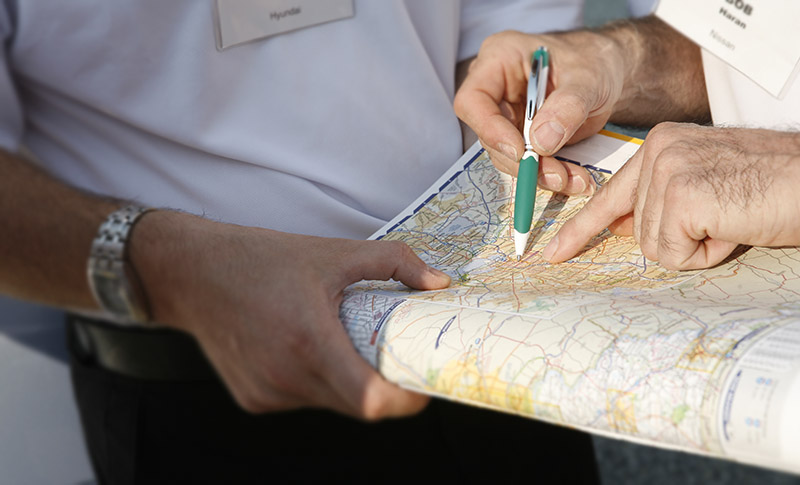
CaFCP members determined that the early market for FCEVs would be end customers, not fleets, and that hydrogen stations needed to be built with customers in mind. ITS-UC Davis and UC Irvine conducted studies about how people drive and where they get fuel, which led to the concept of clusters, destinations, and connectors for the early hydrogen station network.
Clusters of stations in dense urban areas give consumers the confidence that they can fill their FCEVs near their homes and close to their jobs. In the early years, the goal was to identify a network of fueling locations that provided a maximum six-minute drive within target early adopter communities, keeping in mind that “six minutes” might be a few blocks in some cities. Read more about how CaFCP identified cluster cities.
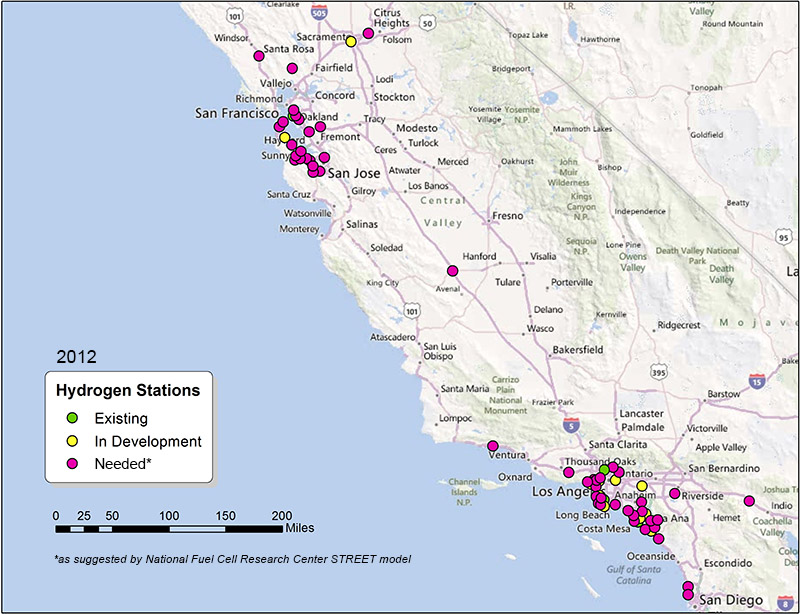
Destination and connector stations are an important element of the early network. Because FCEVs have long range, people expect to use their cars the same as gasoline vehicles—to go beyond the daily commute or travel outside their cluster. These stations also provide the foundation for the next cluster cities, ensuring that the network would continue to grow. Read more about station locations.
Stations for heavy-duty vehicles follow a different pattern. Large transit agencies have fueling islands inside the bus yards and smaller agencies use nearby card-lock stations that are designed for heavy-duty vehicles. Trucking companies also use either private fleet fueling or card-lock stations. CaFCP’s Medium-Duty and Heavy-Duty Fuel Cell Electric Truck Action Plan for California identifies the need for coordinated planning of heavy-duty hydrogen stations to ensure that several demonstration projects can use the same station.
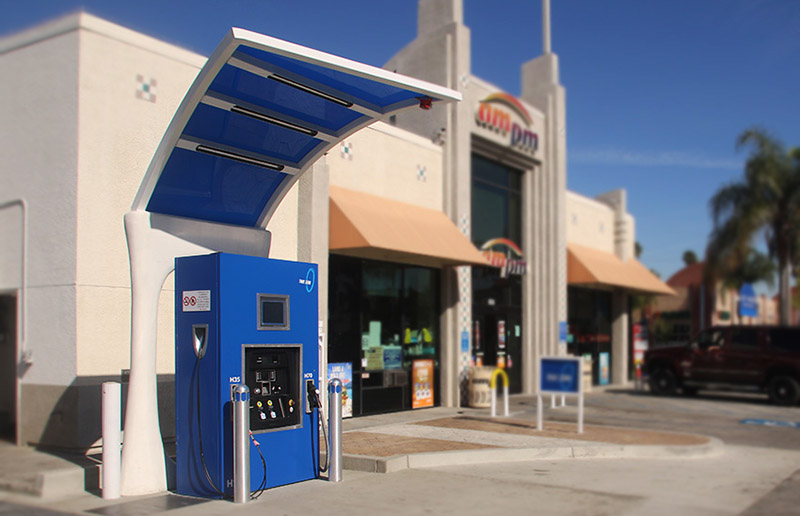
While planning the hydrogen network, CaFCP members drew on their experience with CNG and other alternative fuel vehicles. They identified that hydrogen fueling should be as similar as possible to fueling with gasoline—24/7 operation in a well-lit facility that offers amenities like restrooms and convenience stores. Customers should be able to pay with credit cards, wash the windows, and put air in the tires.
CaFCP’s “Project Jumpstart” conducted a detailed study of potential sites for hydrogen stations that analyzed 72 operators and 135 sites in several categories: fleet fueling (CNG and E85), big box retailers, gas stations, and government properties (Caltrans, transit agencies, rest areas, military). Gas stations were deemed the best option because of their experience with consumer fueling, accessibility for fuel delivery trucks, and willingness to host a new fuel.
Not all stations have enough space for hydrogen station equipment, nor the zoning to dispense a gaseous fuel. CaFCP members also learned some gas station operators don’t own the land beneath their station. To help identify potential locations that can host a hydrogen station, California’s Governor’s Office of Business Development’s Hydrogen Station Permitting Guidebook provides checklists, tips, and best practices.
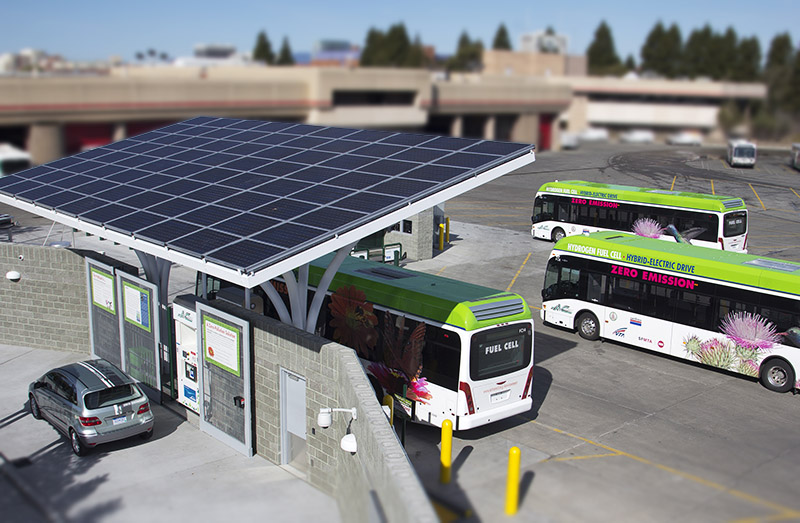
Fuel cell trucks and buses need high-capacity stations that store 500 kg or more of hydrogen and can conduct back-to-back fills in less than 10 minutes per vehicle. For bus fleets, today’s hydrogen stations are in the transit yard and fill only buses. Heavy-duty drayage trucks and medium-duty package delivery trucks are currently under development as pilot programs and CaFCP members and other stakeholders are planning the supporting infrastructure.
Ideally, one or two well-placed stations will serve multiple demonstration projects in a region. The first stations should take into account the potential for small fuel cell truck pilots to grow into larger demonstration fleets and early commercialization.
For example, by locating hydrogen stations at the Ports of Long Beach and Los Angeles and within a 100-to-200 mile range of the ports, fuel cell drayage trucks can reach the Inland Empire and Bakersfield. Stations in Sacramento and on the South San Francisco peninsula will provide range for FCETs at the Port of Oakland and could support future truck demonstration projects. Read more in CaFCP’s Medium- and Heavy-Duty FCET Action Plan.

Germany’s Clean Energy Partnership has a plan for 400 hydrogen stations for cars, buses, and trucks by 2023. The CEP website provides details about the stations and NOW has a lessons learned guide for planning and permitting stations (in German only).
Scandinavia (Norway, Sweden and Denmark) have a hydrogen deployment plan that is targeted to a different commute pattern than we have in the U.S., plus Norway is already an exporter of hydrogen made from renewable sources. See more in this presentation from NEL.
Japan is preparing for a fuel cell Olympic Games in 2020 with a goal of 90 hydrogen stations. Japan’s plan accounts for very scarce land in its largest cities and that most fuel stations are not self-service. Read more in this presentation from the 2016 World Hydrogen Energy Conference.
Orkney, an island off the coast of Scotland, has a BIG HIT project called Surf ‘n Turf that makes hydrogen from excess off-shore wind and tidal energy and transports the hydrogen to other islands where it will become electricity again. The bigger picture plan includes making fuel for fuel cell buses, trucks, and cars in Aberdeen.
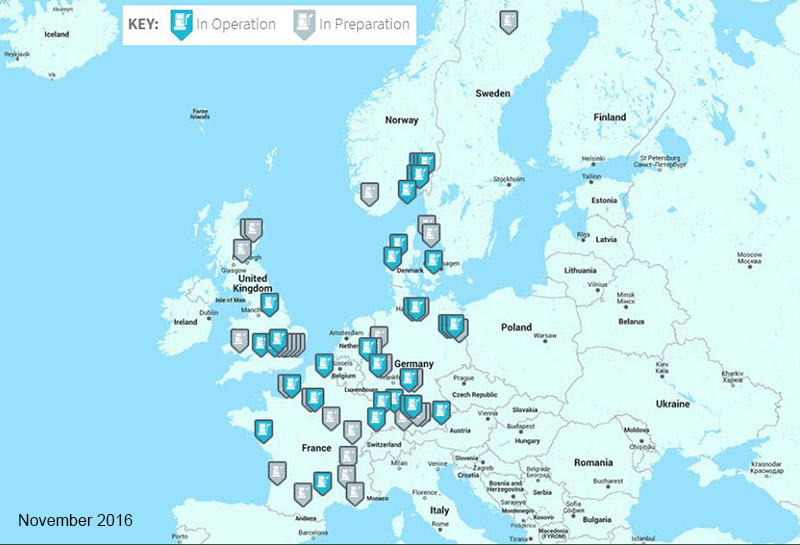
Hydrogen Mobility Europe is creating a large network of stations for buses and cars by linking the individual efforts in European countries. France, Germany, Scandinavia, and the UK are already participating, and other countries are considering the network as they build their first stations.